Table of Contents
CNC Custom Machining
What is a CNC Machine?
How CNC Machining Works
What is Custom CNC Machining?
CNC Versus Injection Molding for Plastic Parts
Custom 3D Printing Services
- Selective Laser Sintering (SLS)
- Combining Custom 3D Printing and CNC Machining
Types of CNC Machines
- 2-axis
- 2.5 axis
- 3-axis
- 4 axis
- 5 axis
CNC Primary Services
- CNC Milling and Turning Machines
- Swiss CNC Machine (Swiss-type lathe)
- What CNC Turning Machine To Use for Custom Applications?
- CNC Milling Machines
- CNC Laser Cutting Machines
- Electrical Discharge CNC Machines (EDM)
- CNC Plasma Cutters
- CNC Waterjet Cutting Machines
Custom CNC Machining Materials
- Aluminum
- Aluminum Alloys
- Metal
- Copper
- Steel
- Plastic
- Advantages and Disadvantages of Machining Plastics
What is a CNC Machine?
CNC (Computer Numerical Controlled) machining is a term that is used to refer to numerous machining applications. A CNC machine features programmable settings that enable it to perform various functions requiring minimal human intervention. This enables manufacturers to streamline many manufacturing operations that would have otherwise needed to be performed manually. CNC machining encompasses a wide array of complex machinery including milling, turning, waterjet cutting, laser cutters and many more. These machines are used to cut and shape materials, resulting in the creation of custom parts for a wide variety of applicaitons.
How do CNC Machines Work?
Today’s CNC machines contain highly automated mechanical parts and an innovative design, setting them apart from traditional machines of the past. Computer-aided design (CAD) software defines mechanical dimensions which are translated into manufacturing directives by computer-aided manufacturing (CAM) software. A computer automates, monitors, and controls the movement of CNC machines. CNC machining includes many benefits over machining equipment without CNC programmable capabilities. CNC machines can complete multiple functions at the same time and increase productivity while eliminating waste, and lessening the potential for human error. They are versatile and capable of producing numerous products through the use of actuators, drives, and software programs, which is why CNC machines have achieved great popularity in the production industry and are widely used today.
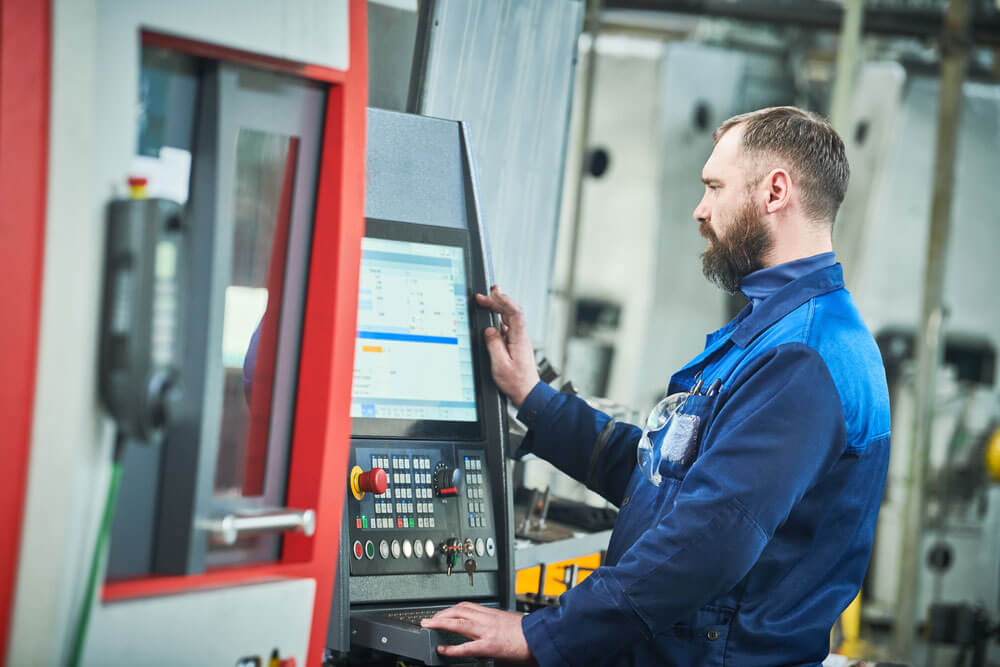
What is Custom CNC Machining?
Custom machining includes using the various forms of CNC machining such as CNC milling, CNC turning, EDM, and laser, to create custom parts that are unique and designed according to specific needs. Custom machining has all of the capabilities of CNC machining and can encompass various forms of machining from manual lathes to 5-axis CNC machining. It can include metal machining (bronze, brass, stainless steel) or plastic machining and can be used for custom metal engraving. Custom machining quickly creates high-quality desired parts with unique features by allowing multiple elements to be combined into a single part. CNC machines are most often the best option for custom projects since they are capable of operating semi-autonomously and create precise and accurate plastic and metal parts. Another advantage of custom CNC machining is that it can be significantly more accurate compared to alternatives like molding and 3D printing. Custom machined parts are high quality and are often stronger than molded parts and have finer tolerances compared to processes like 3D printing.
CNC Versus Injection Molding Plastic Parts
When large numbers of plastic parts are required to be produced cost-efficiently, injection molding is a suitable option. The process of plastic injection molding involves heating thermoplastic resin pellets and forcing the molten material into a hardened mold where it cools. In contrast, CNC machining uses cutting tools combined with high-speed rotation to cut parts by removing material from a workpiece. While injection molding is a reliable and popular solution for manufacturing plastic components, it is not always the ideal choice. Below are some tips to consider when deciding between the two processes.
- Injection molding can generally accommodate sharp internal corners that are very difficult to achieve with CNC machining.
- CNC machining enables fairly easy design changes and adaptations compared to injection molding, which results in costly and time-consuming tooling changes..
- CNC machines are not as precise on softer materials while many flexible materials like plastics and elastomers do well with injection molding.
- Injection molding is usually only economic when parts are produced in high volumes due to the high costs of steel and aluminum molds used in the process.
In certain cases, the two processes can be used together.
Custom 3D Printing Services
3D printing is capable of creating virtually any shape imaginable into a 3D part. Custom 3D printing can even be used to create threads. 3D printing is often quicker compared to traditional technologies.

Selective Laser Sintering (SLS)
This industrial printing process works by creating prototypes and production parts quickly. Many materials are available to choose from and it creates highly durable parts that are flexible and heat and chemically resistant. This is a cost-effective choice when higher volumes of 3D-printed parts are needed. Multiple parts can be easily nested into a single build since no support structures are required. Common uses for SLS are seen in jigs and fixtures, snap fits, and living hinges.
Combining Custom 3D Printing and CNC Machining
CNC machines are compatible with tools made by 3D printing such as jigs and fixtures, clamping, and positioning tools. 3d printing can be combined with CNC machining to get the best benefit from both processes.
Types of CNC Machines
There are over a dozen types of CNC machines available. They are capable of cutting various types of materials such as metal, glass, and plastics.CNC machining equipment is used across various industries including, medical, industrial, military, and oil and gas. The type of CNC machine required to create a final product depends on a particular material’s dimensions and geometry.
CNC machines are most often divided into one of the following groups: 2-axis, 2.5-axis, 3-axis, 4-axis, and 5-axis. This includes how the machine moves, the way it cuts into the workpiece, as well as whether the material moves or a cutting tool moves to arrive at a finished product.
- 2-axis CNC machines contain 2 axes of movement, which are most commonly the x-axis and the y-axis. These machines can cut many parts and objects from sheets with precision.
- 2.5-axis, also known as a two-and-a-half-axis mill, is a CNC machine that has 3 axes, though it is capable of cutting in only 2 out of the 3 axes at a time. This is due to its software or hardware limitations. 2.5-axis machines manufacture 2.5D geometry (two and a half dimensions), which enables them to cut multiple flat surfaces of various depths.
- 3-axis machines includes a cutting tool that moves simultaneously on X, Y and Z axiis.
- 4-axis machining allows more complex shapes that would otherwise not be possible with a 3-axis machine.
- 5-axis machining enables a workpiece to be machined from all sides. Larger parts can be manufactured quicker. Since there is increased freedom of movement, greater precision is achieved with higher yields.
CNC Primary Services
Next, we will cover the 5 common types of CNC machining processes used by CNC machines most commonly used across industries.
Milling
CNC Turning Machines
CNC lathes feature a cutting tool that is mounted and moved on various axes while the material is held in place and rotated by the main spindle. Certain types of CNC lathes are known as CNC Turning Machines since the rotating action of the workpiece is referred to as “turning.” Machine shops can create many shapes using this tool. CNC turning is commonly used in automotive, aerospace, medical and electronics industries. CNC lathes and turning machines, can create drilled holes, bores, reamed holes, bores, tapping, slots, tapers and threads on both internal and external parts of a component. Some of the parts created on CNC lathes and CNC turning machines include screws, shafts, bolts, and poppets. CNC turning provides high accuracy in mass production.
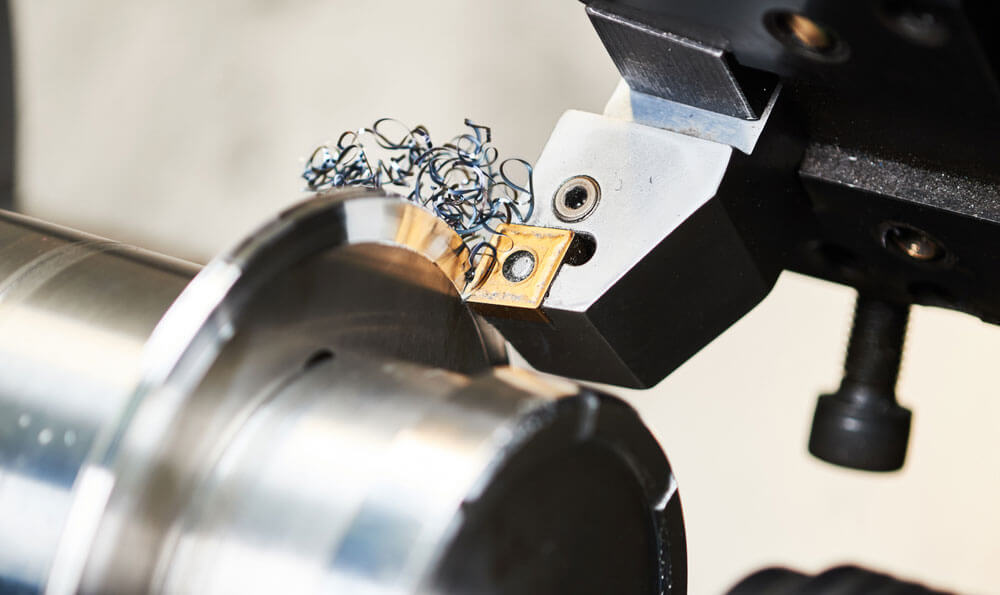
Swiss CNC Machine (Swiss-type lathe)
CNC Swiss lathes are a subset of CNC lathes, with the main difference being the capability to turn and move the workpiece both back and forth along the Z axis. This modern manufacturing machine can create extremely tiny parts with precision, accuracy, and speed. Swiss machining works by holding a material tightly in placewhile only the portion of the bar stock being machined moves into the tooling area. This provides much more support for the material and results in tighter tolerances. This process differs from a traditional CNC lathe, where the workpiece is commonly held firmly on one or both ends as it rotates rapidly in a fixed position. Swiss turning machines are capable of performing several functions in multiple zones and simultaneously compared to traditional lathes, which can typically only handle one operation at a time. Swiss turning machines can perform turning, drilling, milling, and boring at the same time. Additional benefits of Swiss CNC turning include their ability to perform and process complex geometric shapes and they can be used for both small-scale production and mass production.
What CNC Turning Machine To Use for Custom Applications?
Turning machines, CNC lathes, and CNC Swiss CNC Machines have different applications and advantages. The two machining systems contain different processing methods and characteristics. The type of process most suited for a project depends on project needs and specifications. For projects that require minimal bending and contain a high number of tiny cylindrical parts with very tight tolerances, Swiss CNC turning would be the ideal method. Traditional CNC turning in comparison offers high accuracy and repeatability as well as processing speed. Swiss CNC turning is widely used by manufacturers and is a modern technology capable of performing complex CNC machining tasks, unparalleled by any other machine.
CNC Milling Machines
CNC milling uses computerized controls and tools to cut and selectively remove material from a workpiece, resulting in a custom-shaped part. CNC machines used for milling feature rotating cutting tools. They function by converting a 3D CAD design into a set of computer instructions, which guide the tool’s actions and movements automatically. CNC mills work with high accuracy and are vital for the operation of many modern-day manufacturing processes. For instance, injection molding relies on CNC mills to create high-precision copper mold patterns. Milling machines can produce various shapes including shallow-flat surfaces in the workpiece and deep cavities and are often used to produce square or rectangular shapes with various features.
CNC Laser Cutting Machines
Laser cutting machines feature a highly focused laser beam that precisely cuts, slices, or engraves materials. The laser heats the material resulting in it melting or vaporizing, which creates a cut in the material. The material is commonly in a sheet format. CNC laser cutting machines can produce many designs in comparison to cutting machines such as lathes, turning, and mills. Laser machines often create precise and burr-free cuts and edges that do not need any additional finishing. CNC laser engravers are often used for custom projects involving marking and decorating machined components such as company logos. This is where laser engraving can be utilized to create a unique finish to a component even after the machining operation is complete.
Electrical Discharge CNC Machines (EDM)
EDM machines use highly controlled electrical sparks to form materials into desired shapes. This process is also referred to as die sinking, spark eroding, wire burning, or spark machining. The machine emits an electrical discharge and intense heat is produced when a component is placed under the electrode wire. The material is melted creating the desired shape. EDM is mainly used for creating parts that require precise micro holes, tapered or angled aspects, slots, and various complicated component features. EDM is most often used for very tough metals that are difficult to machine.
CNC Plasma Cutters
These machines cut materials using a high-powered plasma torch, which is computer controlled. When CNC plasma cutting is required, the material being cut needs to be electrically conductive. Compatible materials include steel, aluminum, stainless steel, brass, and copper.
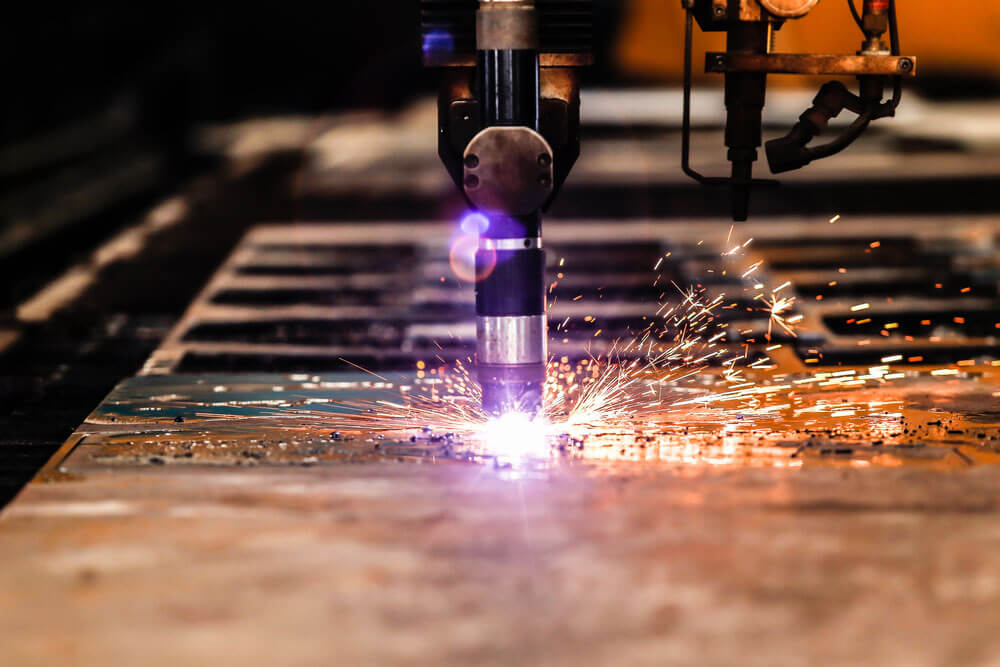
CNC Waterjet Cutting Machines
Water jets are industrial tools that rely on a high-pressure jet of water to cut various materials. Waterjets can use water alone or be mixed with an abrasive like garnet when cutting harder materials. Waterjet cutting is commonly used when specific materials are too sensitive to the high temperatures produced by alternate cutting methods. A CNC waterjet cutting machine is more costly than a plasma cutter. but is more flexible in materials it can cut.
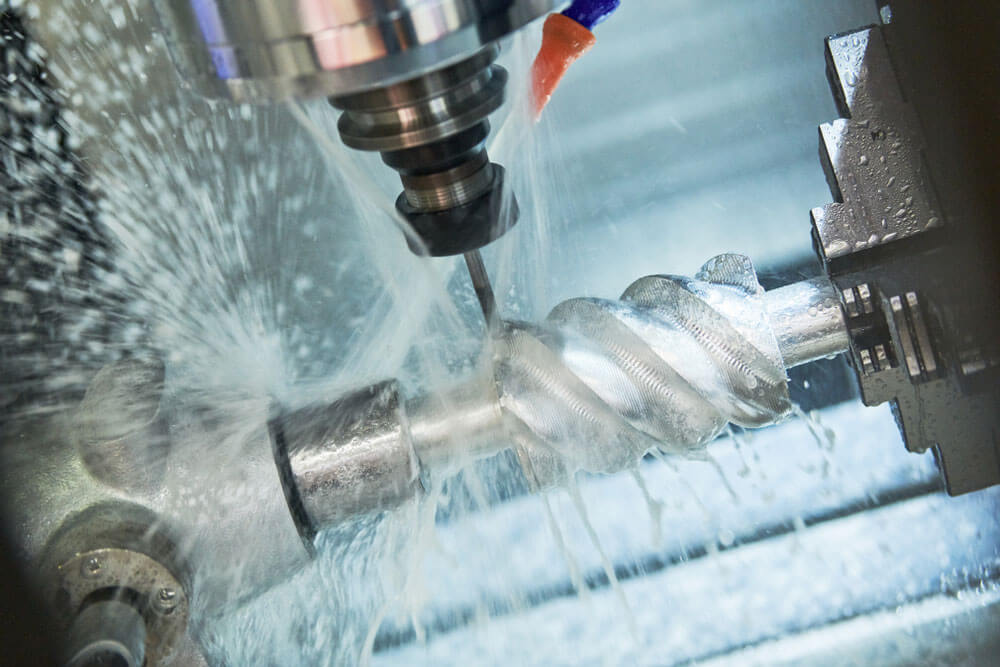
Materials
Aluminum
Aluminum is a frequently used metal due to its low cost and light weight. It is strong, malleable, non-magnetic, and highly resistant to corrosion. Aluminum is easy to machine. When aluminum is combined with additional elements including copper, lithium, magnesium, silicon, and zinc to form an alloy, much greater strength is achieved. Some of the ways CNC machines can manufacture custom aluminum prototypes is through laser cutting aluminum, which is fast and efficient and time-saving, or through aluminum milling, which offers high precision.
Aluminum Alloys
6000 Series: This is the most common series used for machining. It is versatile and corrosion resistant and easy to machine.
Aluminum 6061: This aluminum grade is most often used in CNC machining due to its excellent processing capability, toughness, and great corrosion resistance. Various industries rely on Aluminum 6061 and it is used for the manufacture of trucks, mechanical parts, ships, and for various applications requiring precision processing. Aluminum 6061 is often used for 2, 3, 4 and 5-axis CNC machining.
Aluminum 6061-T6: This variant of 6061 aluminum is the most commonly used alloy for various industries including electronics, transportation, aerospace, and military industries.
Metal
Metal machining services can be used for prototyping and mass production using CNC equipment. CNC multi-axis lathes, milling machining centers, and EDM wire cutting machines are among the CNC machining equipment capable of metal machining. A CNC milling machine is ideal for providing a high-quality finish and is often used for metal milling including aluminum, steel, stainless steel, and titanium. Metal machining on various steel alloys such as bronze, copper, aluminum, and brass, can be done by turning and milling.
Copper
Pure copper is highly ductile and tough, which makes it a challenging metal to machine. It is known for its superb thermal and electrical conductivity, though it is quite soft and not ideal for industrial applications. This is why machinability can be improved by alloying copper with other metals. The most popular copper alloys include bronze and brass which commonly contain over 80% copper. Copper custom parts can be created through various machining techniques including CNC milling, CNC turning, and CNC laser cutting.
Steel
The machinability of steel depends on alloying elements as well as heat treatment and manufacturing processes. Steel alloys are heat resistant and have good plasticity and toughness, combined with high tensile strength. Steel turning is possible using CNC turning, which is a manufacturing process where steel round stock is held on a spindle while it is rotated as a cutting tool removes material, creating the desired shape. Steel bending is the process of using CNC bending, also called CNC forming, to reshape sheet metal from a flat form. Steel milling is common through feed and speed will vary based on factors including the steel grade, the depth, and width of a cut, and the material of the tool.
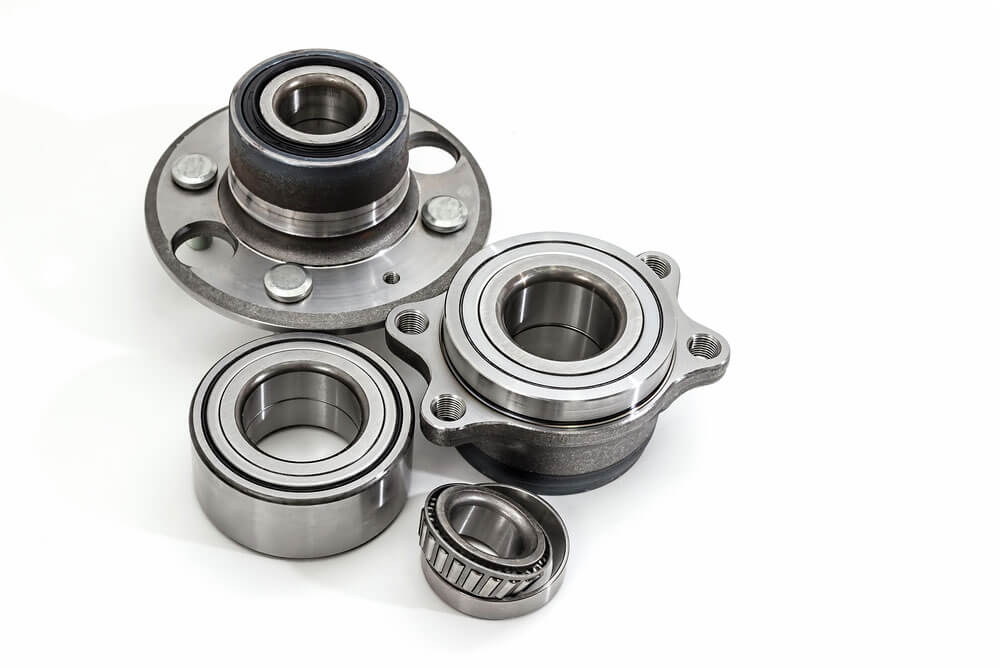
Plastic
The more rigid a plastic is, the easier it is to be machined. Custom plastic parts can be created using methods of plastic machining, which include CNC machining, turning, milling, waterjet cutting, and laser cutting.
Advantages and Disadvantages of Machining Plastics
Some of the advantages of machining plastic include no mould costs and plastic components that can be manufactured with short lead times. Low volumes can be manufactured economically. Thicker wall sections can be accommodated. Components that are too large to be molded can be machined from plastic. Disadvantages of machining plastics include limits of rigidity and tolerances. High levels of scrap can result. The generated heat is not conducted away by plastic materials in the machining process. Certain composite plastics produce dust, requiring a dust collection system. In addition, machining plastics can result in high costs of raw material and CNC machine time. Machining plastic however is a feasible option for short runs.